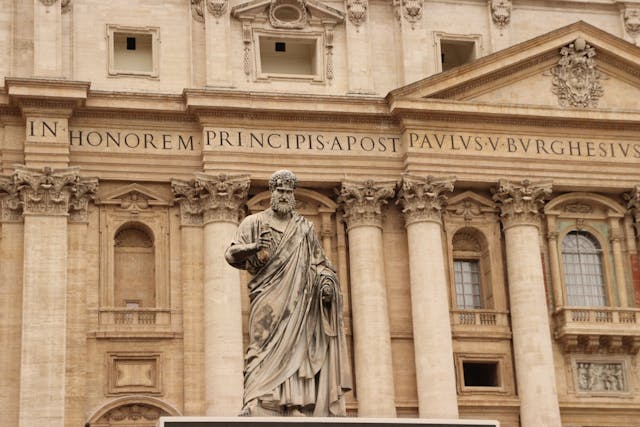
How is a pope elected? A pope is elected by the College of Cardinals and they need to get two-thirds of the vote to be elected.
There have been approximately 266 popes so far. I say approximately because at some points there were two popes at the same time as different parts of the church vied for power or as different monarchs tried to control the Roman Catholic Church. The first pope is said to be St. Peter, one of the disciples of Jesus Christ. This was backdated because the expression “pope” wasn’t used until the 3rd century. It came from the word “papa” and was used to refer to the Bishop of Rome who was said to be descended from St. Peter. So, the current pope is pope number 266, or thereabouts. Out of these 266 popes, only seven popes have resigned. The rest died in their post. So, what happens when the current pope dies and they need to choose a new one.
The first step is to choose a person who is eligible to be pope. Surprisingly, any baptized Catholic male who is sound of mind and capable to take up the job can be made pope. It has to be a male because the Catholic church doesn’t allow women to be priests. In actuality, the next pope is usually chosen from amongst the cardinals of the Roman Catholic church. There are 252 cardinals, but in 1996 church law was changed so that only cardinals who are under 80 can be eligible to be pope. That reduces the number of available cardinals to 132, because 120 of them are over 80. Cardinals are all selected by the pope and it is a lifetime appointment.
The College of Cardinals is assembled in the Vatican City and they first choose who they are going to vote for. The pope is the head of the Roman Catholic church and the representative of Christ on Earth, but there is also a lot of politics that go into the mix. Similar to any other election, different factions may want to support a different candidate. That is why the elections are never simple and can take many days. The result of the election is said to be God’s will, and that is pretty hard to argue with, but it is fairly political. For a lot of history, the most powerful monarch in Europe was able to heavily sway the election and make sure their candidate for pope was chosen. Interestingly, states within the Holy Roman Empire, which was left over from the Roman Empire, were able to veto the choice of pope. The Holy Roman Empire officially ended in 1806 and only Austria was left with a veto, which they used in 1903. To stop this, the rule of veto was removed by the pope, also in 1903.
Once the candidate has been chosen and has accepted the nomination, voting begins. All of the cardinals meet at St. Peter’s Basilica for a mass in the morning and then they head to the Sistine Chapel, most famous for its ceiling painted by Michelangelo, for the voting. Once all of the cardinals are in the chapel, it is sealed and they are not allowed in or out. (Although they are allowed out to use the bathroom.) The whole process is a closely guarded secret and the chapel is thoroughly checked for cameras and microphones. Any cardinal that talks about the process will be excommunicated.
Cardinals vote four times a day, for up to three days. If there is no decision, they have a day off, and then go back to voting again. A nominee needs to get two-thirds of the vote to be elected. If a ballot ends in no decision, the ballot papers are burned and black smoke comes out of the chapel’s chimney. This is achieved by adding damp straw to the fire. If the ballot results in a decision, the papers alone are burned, which produces white smoke. Recently, chemicals are added to make the black and white smoke difference clearer. The pope is pretty much always a cardinal, but a layperson can be elected. If they are, they have to be made a deacon, then a priest, then a bishop, and then they can be pope. An election can last a long time, depending on the different factions. The average length of a papal conclave in the 20th century was three days. The shortest was 24 hours. The longest conclave of ll time was in 1268 and lasted three years. And this is what I learned today.
Try these:
Sources
https://edition.cnn.com/interactive/2013/03/world/pope-conclave
https://en.wikipedia.org/wiki/Papal_conclave
https://www.bbc.com/news/world-21412589
https://www.ecatholic2000.com/list-of-popes
https://en.wikipedia.org/wiki/History_of_the_papacy
https://en.wikipedia.org/wiki/List_of_current_cardinals
https://en.wikipedia.org/wiki/Pope
https://dol-in.org/role-of-bishops-archbishops-and-cardinals-explained
https://www.vaticancitytours.it/blog/how-do-they-choose-who-will-be-pope
Photo by Engin Deniz Kopan: https://www.pexels.com/photo/statue-of-st-peter-in-front-of-vatican-city-basilica-29718572/
